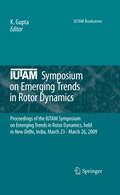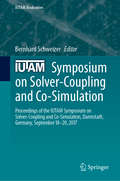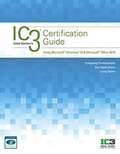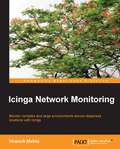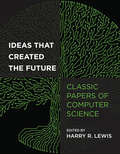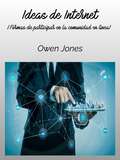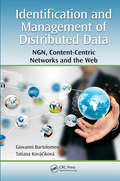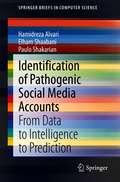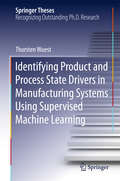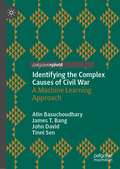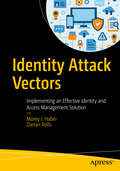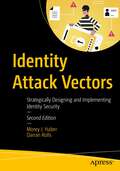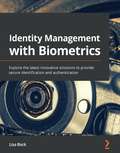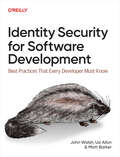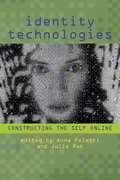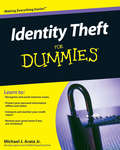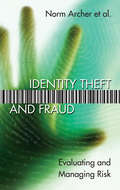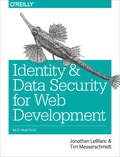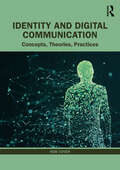- Table View
- List View
IUTAM Symposium on Emerging Trends in Rotor Dynamics
by K. GuptaRotor dynamics is an important branch of dynamics that deals with behavior of rotating machines ranging from very large systems like power plant rotors, for example, a turbogenerator, to very small systems like a tiny dentist's drill, with a variety of rotors such as pumps, compressors, steam/gas turbines, motors, turbopumps etc. as used for example in process industry, falling in between. The speeds of these rotors vary in a large range, from a few hundred RPM to more than a hundred thousand RPM. Complex systems of rotating shafts depending upon their specific requirements, are supported on different types of bearings. There are rolling element bearings, various kinds of fluid film bearings, foil and gas bearings, magnetic bearings, to name but a few. The present day rotors are much lighter, handle a large amount of energy and fluid mass, operate at much higher speeds, and therefore are most susceptible to vibration and instability problems. This have given rise to several interesting physical phenomena, some of which are fairly well understood today, while some are still the subject of continued investigation. Research in rotor dynamics started more than one hundred years ago. The progress of the research in the early years was slow. However, with the availability of larger computing power and versatile measurement technologies, research in all aspects of rotor dynamics has accelerated over the past decades. The demand from industry for light weight, high performance and reliable rotor-bearing systems is the driving force for research, and new developments in the field of rotor dynamics. The symposium proceedings contain papers on various important aspects of rotor dynamics such as, modeling, analytical, computational and experimental methods, developments in bearings, dampers, seals including magnetic bearings, rub, impact and foundation effects, turbomachine blades, active and passive vibration control strategies including control of instabilities, nonlinear and parametric effects, fault diagnostics and condition monitoring, and cracked rotors. This volume is of immense value to teachers, researchers in educational institutes, scientists, researchers in R&D laboratories and practising engineers in industry.
IUTAM Symposium on Solver-Coupling and Co-Simulation: Proceedings of the IUTAM Symposium on Solver-Coupling and Co-Simulation, Darmstadt, Germany, September 18-20, 2017 (IUTAM Bookseries #35)
by Bernhard SchweizerThis is the Proceedings of the IUTAM Symposium on Solver Coupling and Co-Simulation that was held in Darmstadt, Germany, September 18-20, 2017. The symposium focused on recent advances in the development of numerical methods for solver coupling, like new explicit, implicit and semi-implicit co-simulation methods, new approaches for realizing variable communication-time grids, and advances in the stability and convergence analysis of solver coupling methods.Recent developments in the practical application of co-simulation methods, for instance new fields of application for solver coupling approaches, new developments in the parallelization of dynamic models with co-simulation techniques, and standardization of co-simulation interfaces, i.e. standardization of data and model exchange were also discussed.The book brings together the research results of leading scientists in applied mathematics, mechanics, and engineering science, thus contributing to further develop numerical methods for coupled simulations.
IUTAM Symposium on Unsteady Separated Flows and their Control
by Marianna Braza K. HouriganUnsteady separated flows are an important topic in theoretical and applied mechanics. The IUTAM Symposium held in Corfu in 2007 (and following on from a previous meeting in Toulouse in 2002) aimed at achieving a unified approach which will regroup the knowledge coming from theoretical, experimental, numerical simulation, modeling and flow-control aspects of separated unsteady flows with respect to incompressible and compressible flow regimes. Topics addressed include physical aspects of the dynamics related to unsteady separation in incompressible flows and flows under compressibility effects, and the state of the art methods for modeling these kinds of flows in high Reynolds numbers. Special attention is paid to control theory and applications, especially including feed-back effects for the attenuation of unsteadiness and of flow separation. The understanding of the flow-physics and their efficient turbulence modeling remains a serious problem in a number of engineering applications, including Aeronautics and Aeroelasticity. Furthermore, the study of advanced flow modeling techniques, especially to control high-Reynolds number transitional and turbulent flows involving unsteady separation, is a crucial need in the above-mentioned domains of fundamental and applied research nowadays.
Ic3 Certification Guide Using Microsoft Windows 10 And Microsoft Office 2016
by Cci LearningPrepare for success with IC3 (Internet and Computing Core Certification) as you master the basic requirements for all three IC3 certification exams: Computing Fundamentals, Key Applications, and Living Online. IC3 CERTIFICATION GUIDE USING MICROSOFT WINDOWS 10 & MICROSOFT OFFICE 2016 offers the IC3 global training and certification preparation to help you earn globally accepted, validated credentials and prove to employers, customers or higher education institutions that you have the computer skills necessary to succeed in today�s digital world. This book emphasizes key knowledge and timely skills for proficiency in using computer technology, ranging from basic hardware and software to operating systems, applications, and the Internet. Comprehensive instruction, lesson objectives, hands-on lab exercises, and specific computer terms help you build the skills you need to advance your career through additional computer certifications, including CompTIA�s A+ and similar exams.
Icinga Network Monitoring
by Viranch MehtaThis book is written in a concise and easy-to-follow approach, it will guide you to get you started with Icinga and lead you through the difficult concepts with illustrated examples and screenshots.If you are a system administrator or Linux enthusiast who is looking for a flexible tool to monitor network infrastructure efficiently, or trying to understand the Icinga software, this is a great book for you. You are expected to have solid foundation in Linux.
Ideas That Created the Future: Classic Papers of Computer Science
by Harry R. LewisClassic papers by thinkers ranging from from Aristotle and Leibniz to Norbert Wiener and Gordon Moore that chart the evolution of computer science.Ideas That Created the Future collects forty-six classic papers in computer science that map the evolution of the field. It covers all aspects of computer science: theory and practice, architectures and algorithms, and logic and software systems, with an emphasis on the period of 1936-1980 but also including important early work. Offering papers by thinkers ranging from Aristotle and Leibniz to Alan Turing and Nobert Wiener, the book documents the discoveries and inventions that created today's digital world. Each paper is accompanied by a brief essay by Harry Lewis, the volume's editor, offering historical and intellectual context.
Ideas de Internet: ¡Formas de convertirse en parte de la comunidad en línea! (Cómo... #124)
by Owen JonesBienvenido a "Ideas de Internet " – un manual de principiantes, tu guía para dominar el ámbito digital con confianza y comprensión. . Internet se ha convertido en una herramienta esencial para comunicación, aprendizaje y entretenimiento. Como experto en todo lo relacionado con Internet, estoy encantado de ser tu guía en este aleccionador viaje. Este manual se creó meticulosamente elaborado para proveer a los principiantes con bases sólidas para recorrer el vasto entorno de Internet. Bien sea que te estás conectando por primera vez, o buscas profundizar tu conocimiento, esta guía te fortalecerá para navegar con facilidad y tomar decisiones con fundamento. Ten la seguridad de que toda la información que aquí se presenta es exacta y está basada en los conocimientos más recientes. El Internet, aunque increíblemente poderoso, puede ser complejo, pero al embarcarse juntos en esta aventura, te estás preparando para el éxito. Adquiere las habilidades y la sabiduría que necesitas para sacar el máximo partido de la era digital, manteniendo los valores de la verdad y la integridad. ¡Comencemos a explorar las infinitas posibilidades de Internet! Espero que la información te resulte útil, provechosa y redituable.
Ideas for the Animated Short: Finding and Building Stories
by Karen Sullivan Gary SchumerFollow from start to finish the creation of an animated short from the pre-production thought process to story development and character design. Explore the best practices and avoid the common pitfalls of creating two to five minute shorts. Watch a specially created animated short, demonstrating the core techniques and principles at the companion website! Packed with illustrated examples of idea generation, character and story development, acting, dialogue and storyboarding practice this is your conceptual toolkit proven to meet the challenges of this unique art form. The companion website includes in-depth interviews with industry insiders, 18 short animations (many with accompanying animatics, character designs and environment designs) and an acting workshop to get your animated short off to a flying start! With all NEW content on script writing, acting, sound design and visual storytelling as well as stereoscopic 3D storytelling, further enhance your animated shorts and apply the industry best practices to your own projects and workflows.
Ideen Für Passive Einkommen: 50 Wege um Online Geld Zu Machen Analysiert
by Michael EzeanakaViele Menschen machen den Fehler, passives Einkommen mit dem schnellen Geld gleichzusetzen. Ich hoffe, dass Sie nicht denselben Fehler machen. Aus diesem Grund habe ich diesen Leitfaden über die gängigsten Möglichkeiten, passives Einkommen zu erzielen, zusammengestellt. Meine Absicht ist es, Ihnen bei der Entscheidung zu helfen, ob eine Gelegenheit für Sie geeignet ist oder nicht. Ich möchte Ihnen auch dabei helfen, die Mythen und Missverständnisse rund um diese einkommensschaffenden Methoden zu entlarven. Die Informationen und Analysen, die Sie in diesem Buch finden, beruhen auf Fakten und beobachtbaren Trends. Ich möchte sicherstellen, dass Sie auf dem richtigen Weg sind, wenn Sie sich schließlich entscheiden, einen Weg zu finden, passives Einkommen zu generieren.
Ideias Para a Internet: Formas de fazer parte da comunidade online! (Como faz... #124)
by Owen JonesFormas de fazer parte da comunidade online e se atualizar com o século 21! Ideias para a Internet Bem-vindo ao "Ideias para a Internet" - um manual para iniciantes, seu guia para dominar o mundo digital com confiança e compreensão. No mundo interconectado de hoje, a Internet tornou-se uma ferramenta essencial para comunicação, aprendizado e entretenimento. Como especialista experiente em tudo o que envolve a internet, estou empolgado por ser seu guia nesta jornada esclarecedora. Este manual foi meticulosamente elaborado para fornecer aos iniciantes uma base sólida para atravessar a vasta paisagem da Internet. Esteja você se conectando pela primeira vez ou buscando aprofundar seus conhecimentos, este guia permitirá que você navegue com facilidade e tome decisões informadas. Tenha a certeza de que cada pedaço de informação apresentado aqui está enraizado na precisão e nas últimas perspectivas. A Internet, embora incrivelmente poderosa, pode ser complexa, mas ao embarcar nesta aventura juntos, você está se preparando para o sucesso. Equipe-se com as habilidades e sabedoria necessárias para aproveitar ao máximo a era digital, mantendo os valores da verdade e da integridade. Vamos começar nossa exploração das possibilidades ilimitadas da Internet! Espero que você ache as informações úteis, proveitosas e lucrativas.
Identification Of Research Needs Relating To Potential Biological Or Adverse Health Effects Of Wireless Communication Devices
by National Research Council of the National AcademiesIn recent years there has been a rapid increase in the use of wireless communications devices and a great deal of research has been carried out to investigate possible biological or human health effects resulting from their use. The U.S. Food and Drug Administration asked the National Research Council to organize a workshop to identify research needs and gaps in knowledge in the areas of dosimetry and exposure, epidemiology, human laboratory studies, mechanisms, and animal and cell biology. The workshop did not include the evaluation of health effects or the generation of recommendations relating to how identified research needs should be met. Some needs and gaps identified at the workshop include: (1) characterization of exposures from wireless devices and RF base station antennas in juveniles, children, fetuses, and pregnant women and (2) evaluation of devices that use newer technologies (e.g., texting, web-surfing).
Identification and Management of Distributed Data: NGN, Content-Centric Networks and the Web
by Giovanni Bartolomeo Tatiana KovacikovaAlthough several books and academic courses discuss data management and networking, few of them focus on the convergence of networking and software technologies for identifying, addressing, and managing distributed data. Focusing on this convergence, Identification and Management of Distributed Data: NGN, Content-Centric Networks and the Web collat
Identification and Mitigation of Fraudulent Online Transactions Using Authentication and Fraud Detection System (Studies in Smart Technologies)
by Vikrant Bhateja Vipin Khattri Sandeep Kumar Nayak Deepak Kumar SinghThe book explores comprehensive demonstration of the performance analytics following the implementation of the authentication and fraud detection system strategies. These evaluations are based on different performance metrics such as accuracy, true positive rate, true negative rate, precision, g-mean, f1-score and receiver operating characteristic curve. This book highlights effectiveness of the implemented authentication and fraud detection system based on their performance statistics. Additionally, it explores the limitations and social impact of the developed online transaction system, offering insights into potential areas for future research.
Identification of Pathogenic Social Media Accounts: From Data to Intelligence to Prediction (SpringerBriefs in Computer Science)
by Paulo Shakarian Elham Shaabani Hamidreza AlvariThis book sheds light on the challenges facing social media in combating malicious accounts, and aims to introduce current practices to address the challenges. It further provides an in-depth investigation regarding characteristics of “Pathogenic Social Media (PSM),”by focusing on how they differ from other social bots (e.g., trolls, sybils and cyborgs) and normal users as well as how PSMs communicate to achieve their malicious goals. This book leverages sophisticated data mining and machine learning techniques for early identification of PSMs, using the relevant information produced by these bad actors. It also presents proactive intelligence with a multidisciplinary approach that combines machine learning, data mining, causality analysis and social network analysis, providing defenders with the ability to detect these actors that are more likely to form malicious campaigns and spread harmful disinformation. Over the past years, social media has played a major role in massive dissemination of misinformation online. Political events and public opinion on the Web have been allegedly manipulated by several forms of accounts including “Pathogenic Social Media (PSM)” accounts (e.g., ISIS supporters and fake news writers). PSMs are key users in spreading misinformation on social media - in viral proportions. Early identification of PSMs is thus of utmost importance for social media authorities in an effort toward stopping their propaganda. The burden falls to automatic approaches that can identify these accounts shortly after they began their harmful activities. Researchers and advanced-level students studying and working in cybersecurity, data mining, machine learning, social network analysis and sociology will find this book useful. Practitioners of proactive cyber threat intelligence and social media authorities will also find this book interesting and insightful, as it presents an important and emerging type of threat intelligence facing social media and the general public.
Identifying Product and Process State Drivers in Manufacturing Systems Using Supervised Machine Learning
by Thorsten WuestThe book reports on a novel approach for holistically identifying the relevant state drivers of complex, multi-stage manufacturing systems. This approach is able to utilize complex, diverse and high-dimensional data sets, which often occur in manufacturing applications, and to integrate the important process intra- and interrelations. The approach has been evaluated using three scenarios from different manufacturing domains (aviation, chemical and semiconductor). The results, which are reported in detail in this book, confirmed that it is possible to incorporate implicit process intra- and interrelations on both a process and programme level by applying SVM-based feature ranking. In practice, this method can be used to identify the most important process parameters and state characteristics, the so-called state drivers, of a manufacturing system. Given the increasing availability of data and information, this selection support can be directly utilized in, e. g. , quality monitoring and advanced process control. Importantly, the method is neither limited to specific products, manufacturing processes or systems, nor by specific quality concepts.
Identifying the Complex Causes of Civil War: A Machine Learning Approach
by Atin Basuchoudhary James T. Bang Tinni Sen John DavidThis book uses machine-learning to identify the causes of conflict from among the top predictors of conflict. This methodology elevates some complex causal pathways that cause civil conflict over others, thus teasing out the complex interrelationships between the most important variables that cause civil conflict. Success in this realm will lead to scientific theories of conflict that will be useful in preventing and ending civil conflict. After setting out a current review of the literature and a case for using machine learning to analyze and predict civil conflict, the authors lay out the data set, important variables, and investigative strategy of their methodology. The authors then investigate institutional causes, economic causes, and sociological causes for civil conflict, and how that feeds into their model. The methodology provides an identifiable pathway for specifying causal models. This book will be of interest to scholars in the areas of economics, political science, sociology, and artificial intelligence who want to learn more about leveraging machine learning technologies to solve problems and who are invested in preventing civil conflict.
Identity Attack Vectors: Implementing an Effective Identity and Access Management Solution
by Morey J. Haber Darran RollsDiscover how poor identity and privilege management can be leveraged to compromise accounts and credentials within an organization. Learn how role-based identity assignments, entitlements, and auditing strategies can be implemented to mitigate the threats leveraging accounts and identities and how to manage compliance for regulatory initiatives.As a solution, Identity Access Management (IAM) has emerged as the cornerstone of enterprise security. Managing accounts, credentials, roles, certification, and attestation reporting for all resources is now a security and compliance mandate. When identity theft and poor identity management is leveraged as an attack vector, risk and vulnerabilities increase exponentially. As cyber attacks continue to increase in volume and sophistication, it is not a matter of if, but when, your organization will have an incident. Threat actors target accounts, users, and their associated identities, to conduct their malicious activities through privileged attacks and asset vulnerabilities. Identity Attack Vectors details the risks associated with poor identity management practices, the techniques that threat actors and insiders leverage, and the operational best practices that organizations should adopt to protect against identity theft and account compromises, and to develop an effective identity governance program. What You Will Learn Understand the concepts behind an identity and how their associated credentials and accounts can be leveraged as an attack vectorImplement an effective Identity Access Management (IAM) program to manage identities and roles, and provide certification for regulatory complianceSee where identity management controls play a part of the cyber kill chain and how privileges should be managed as a potential weak linkBuild upon industry standards to integrate key identity management technologies into a corporate ecosystemPlan for a successful deployment, implementation scope, measurable risk reduction, auditing and discovery, regulatory reporting, and oversight based on real-world strategies to prevent identity attack vectors Who This Book Is For Management and implementers in IT operations, security, and auditing looking to understand and implement an identity access management program and manage privileges in these environments
Identity Attack Vectors: Strategically Designing and Implementing Identity Security, Second Edition
by Morey J. Haber Darran RollsToday, it’s easier for threat actors to simply log in versus hack in. As cyberattacks continue to increase in volume and sophistication, it’s not a matter of if, but when, your organization will have an incident. Threat actors target accounts, users, and their associated identities—whether human or machine, to initiate or progress their attack. Detecting and defending against these malicious activities should be the basis of all modern cybersecurity initiatives.This book details the risks associated with poor identity security hygiene, the techniques that external and internal threat actors leverage, and the operational best practices that organizations should adopt to protect against identity theft, account compromises, and to develop an effective identity and access security strategy. As a solution to these challenges, Identity Security has emerged as a cornerstone of modern Identity and Access Management (IAM) initiatives. Managing accounts, credentials, roles, entitlements, certifications, and attestation reporting for all identities is now a security and regulatory compliance requirement. In this book, you will discover how inadequate identity and privileged access controls can be exploited to compromise accounts and credentials within an organization. You will understand the modern identity threat landscape and learn how role-based identity assignments, entitlements, and auditing strategies can be used to mitigate the threats across an organization’s entire Identity Fabric. What You Will Learn Understand the concepts behind an identity and how its associated credentials and accounts can be leveraged as an attack vectorImplement an effective identity security strategy to manage identities and accounts based on roles and entitlements, including the most sensitive privileged accountsKnow the role that identity security controls play in the cyber kill chain and how privileges should be managed as a potential weak linkBuild upon industry standards and strategies such as Zero Trust to integrate key identity security technologies into a corporate ecosystemPlan for a successful identity and access security deployment; create an implementation scope and measurable risk reduction; design auditing, discovery, and regulatory reporting; and develop oversight based on real-world strategies to prevent identity attack vectors Who This Book Is For Management and implementers in IT operations, security, and auditing looking to understand and implement an Identity and Access Management (IAM) program and manage privileges in these environments
Identity Management with Biometrics: Explore the latest innovative solutions to provide secure identification and authentication
by Lisa BockIdentity Management with Biometrics is for IT managers, security professionals, students, teachers, and anyone involved in selecting, purchasing, integrating, or securing a biometric system. This book will help you understand how to select the right biometric system for your organization and walk you through the steps for implementing identity management and authentication. A basic understanding of biometric authentication techniques, such as fingerprint and facial recognition, and the importance of providing a secure method of authenticating an individual will help you make the most of the book.
Identity Security for Software Development
by John Walsh Uzi Ailon Matt BarkerMaintaining secrets, credentials, and nonhuman identities in secure ways is an important, though often overlooked, aspect of secure software development. Cloud migration and digital transformation have led to an explosion of nonhuman identities—like automation scripts, cloud native apps, and DevOps tools—that need to be secured across multiple cloud and hybrid environments.DevOps security often addresses vulnerability scanning, but it neglects broader discussions like authentication, authorization, and access control, potentially leaving the door open for breaches. That's where an identity security strategy focused on secrets management can help.In this practical book, authors John Walsh and Uzi Ailon provide conceptual frameworks, technology overviews, and practical code snippets to help DevSecOps engineers, cybersecurity engineers, security managers, and software developers address use cases across CI/CD pipelines, Kubernetes and cloud native, hybrid and multicloud, automation/RPA, IOT/OT, and more. You'll learn:The fundamentals of authentication, authorization, access control, and secrets managementWhat developers need to know about managing secrets and identity to build safer appsWhat nonhuman identities, secrets, and credentials are—and how to secure themHow developers work with their cross-function peers to build safer appsHow identity security fits into modern software development practices
Identity Technologies
by Anna Poletti Julie Rak"Identity Technologies "is a substantial contribution to the fields of autobiography studies, digital studies, and new media studies, exploring the many new modes of self-expression and self-fashioning that have arisen in conjunction with Web 2. 0, social networking, and the increasing saturation of wireless communication devices in everyday life. This volume explores the various ways that individuals construct their identities on the Internet and offers historical perspectives on ways that technologies intersect with identity creation. Bringing together scholarship about the construction of the self by new and established authors from the fields of digital media and auto/biography studies, "Identity Technologies "presents new case studies and fresh theoretical questions emphasizing the methodological challenges inherent in scholarly attempts to account for and analyze the rise of identity technologies. The collection also includes an interview with Lauren Berlant on her use of blogs as research and writing tools.
Identity Theft For Dummies
by Michael J. Arata Jr.Practical solutions to help you deter, detect, and defend against identity theft In 2008, 9. 9 million Americans became victims of identity theft. The cost exceeded $48 billion in 2008; consumers spend some $5 billion out-of-pocket each year to clear up resulting fraud issues. This guide will help keep you from becoming the next victim. Written by a veteran security professional, Identity Theft For Dummies gives you the tools to recognize what information is vulnerable, minimize your risk, stay safe online, and practice damage control if your identity is compromised. If you have a name, a date of birth, and a Social Security number, you're a potential victim; this book helps you recognize your risk and defend against identity thieves Explains what identity theft is, how it happens, and how to recognize if you have become a victim Shows how to protect your personal information, how to be discreet in public places, how to interpret your credit report, and why you should monitor your financial statements Helps you recognize risks you may not have considered, such as what you set at the curb on trash day Provides advice on how to clear your name if you are victimized Identity Theft For Dummies arms you to fight back against this growing threat.
Identity Theft and Fraud: Evaluating and Managing Risk (Critical Issues in Risk Management)
by Junlian Xiang Norm Archer Susan Sproule Yufei Yuan Ken GuoPersonal data is increasingly being exchanged and stored by electronic means, making businesses, organizations and individuals more vulnerable than ever to identity theft and fraud. This book provides a practical and accessible guide to identity theft and fraud using a risk management approach. It outlines various strategies that can be easily implemented to help prevent identity theft and fraud. It addresses technical issues in a clear and uncomplicated way to help decision-makers at all levels understand the steps their businesses and organizations can take to mitigate identity theft and fraud risks. And it highlights the risks individuals face in this digital age. This book can help anyone – businesses and organizations of all sizes, as well as individuals – develop an identity theft and fraud prevention strategy that will reduce their risk and protect their identity assets. To date, little has been written on identity theft and fraud with a Canadian audience in mind. This book fills that gap, helping Canadians minimize their identity theft and fraud risks.
Identity and Data Security for Web Development: Best Practices
by Tim Messerschmidt Jonathan LeBlancDevelopers, designers, engineers, and creators can no longer afford to pass responsibility for identity and data security onto others. Web developers who don’t understand how to obscure data in transmission, for instance, can open security flaws on a site without realizing it. With this practical guide, you’ll learn how and why everyone working on a system needs to ensure that users and data are protected.Authors Jonathan LeBlanc and Tim Messerschmidt provide a deep dive into the concepts, technology, and programming methodologies necessary to build a secure interface for data and identity—without compromising usability. You’ll learn how to plug holes in existing systems, protect against viable attack vectors, and work in environments that sometimes are naturally insecure.Understand the state of web and application security todayDesign security password encryption, and combat password attack vectorsCreate digital fingerprints to identify users through browser, device, and paired device detectionBuild secure data transmission systems through OAuth and OpenID ConnectUse alternate methods of identification for a second factor of authenticationHarden your web applications against attackCreate a secure data transmission system using SSL/TLS, and synchronous and asynchronous cryptography
Identity and Digital Communication: Concepts, Theories, Practices
by Rob CoverThis comprehensive text explores the relationship between identity, subjectivity and digital communication, providing a strong starting point for understanding how fast-changing communication technologies, platforms, applications and practices have an impact on how we perceive ourselves, others, relationships and bodies. Drawing on critical studies of identity, behaviour and representation, Identity and Digital Communication demonstrates how identity is shaped and understood in the context of significant and ongoing shifts in online communication. Chapters cover a range of topics including advances in social networking, the development of deepfake videos, intimacies of everyday communication, the emergence of cultures based on algorithms, the authenticities of TikTok and online communication’s setting as a site for hostility and hate speech. Throughout the text, author Rob Cover shows how the formation and curation of self-identity is increasingly performed and engaged with through digital cultural practices, affirming that these practices must be understood if we are to make sense of identity in the 2020s and beyond. Featuring critical accounts, everyday examples and analysis of key platforms such as TikTok, this textbook is an essential primer for scholars and students in media studies, psychology, cultural studies, sociology, anthropology, computer science, as well as health practitioners, mental health advocates and community members.
